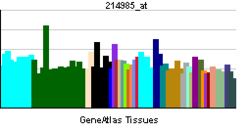The
Combination of Etoposide and Histone Deacetylases applied to Cancers with high
levels of c-MYC and c-FOS gene expression:
This research
project investigates the possibility of combining Etoposide with Histone
Deacetylases in the treatment of cancers that display a significant expression
of te c-Myc and c-Fos gene. The drugs
proposed for this trial are Etoposide and Histone Deacetylases.
Etoposide was
first synthesized in 1966 and is a drug widely used in chemotherapy since 1983
when it obtained FDA approval. Etoposide
forms a ternary complex with DNA and the topoisomerase II enzyme which
participates in the unwinding of DNA, hence prevents the rwligation of the DNA
strands, and by doing so causes DNA strands to break. This action then leads to DNA synthesis errors and
subsequently to cell death. Etoposide has, however, some reported side effects
such as low blood pressure, hair loss, pain or burning at the injection site .
Histone
deacetylation has been an effective treatment for various types of cancers. By
the removal of acetyl groups from histones, histone deacetylases create a
non-permissive chromatin conformation that prevents the transcription of genes
that regulate the expression of proteins involved in tumor development such as
c-FOS. In addition to histones, histone deacetylases deacetylate a variety of
other proteins including transcription factors and other abundant cellular
proteins involved in the regulation of
cell growth, differentiation and cell death. Histone Deacetylases are among the
most promising therapeutic targets for cancer treatment, and they have inspired
researchers to study and develop HDAC inhibitors worldwide.
The present
research project consists in computerized and laboratory testing of the
efficacy of combining these two treatments in cases of observed overexpression
of both the c-MYC and c-FOS gene.
Although the two drugs already exist and are used in cancer therapy, the
interaction of the two drugs when used
in combination needs to be examined. This can be achieved by using a mouse
model bearing specified tumors to be done at the University of Texas at El Paso
(UTEP). Preliminary testing should be conducted by implanting cancer cells in
the skin of mice. The combined treatment should then be applied
indiscriminately to mice presenting high expression of c-Myc and c-FOS, and to
those with low expression of these genes. The response to the treatment will be
monitored to evaluate the efficacy of the treatment in mice with high c-Myc and
c-FOS expression as compared to the control group with low c-Myc and low c-FOS
expression. In a later phase, testing would be conducted in cancer patients presenting high expression
of c-Myc and c-FOS, especially for patients treated for triple negative breast
cancer, but also for ovarian cancer and other types of cancer with an
overexpression of c-MYC.
The
combination of Etoposide with Histone Deacetylases represents de facto a
novelty in cancer treatment, especially in the case of triple negative breast
cancer that is until today associated with a worse prognosis than other breast
cancer types. It has a characteristic recurrence pattern with the peak risk of
recurrence and the majority of deaths occurring in the first 3 and 5 years
after the initial treatment, respectively.


